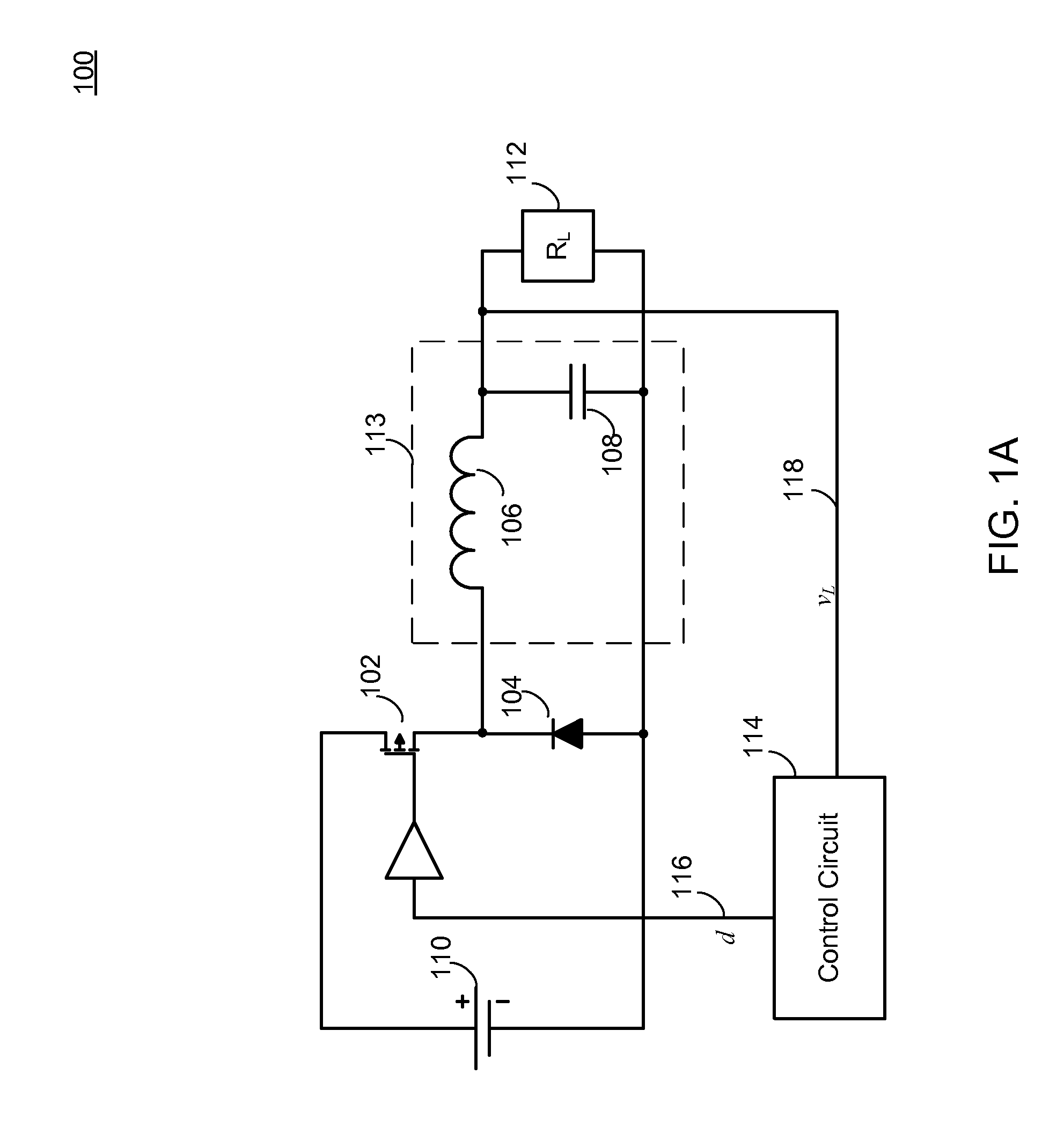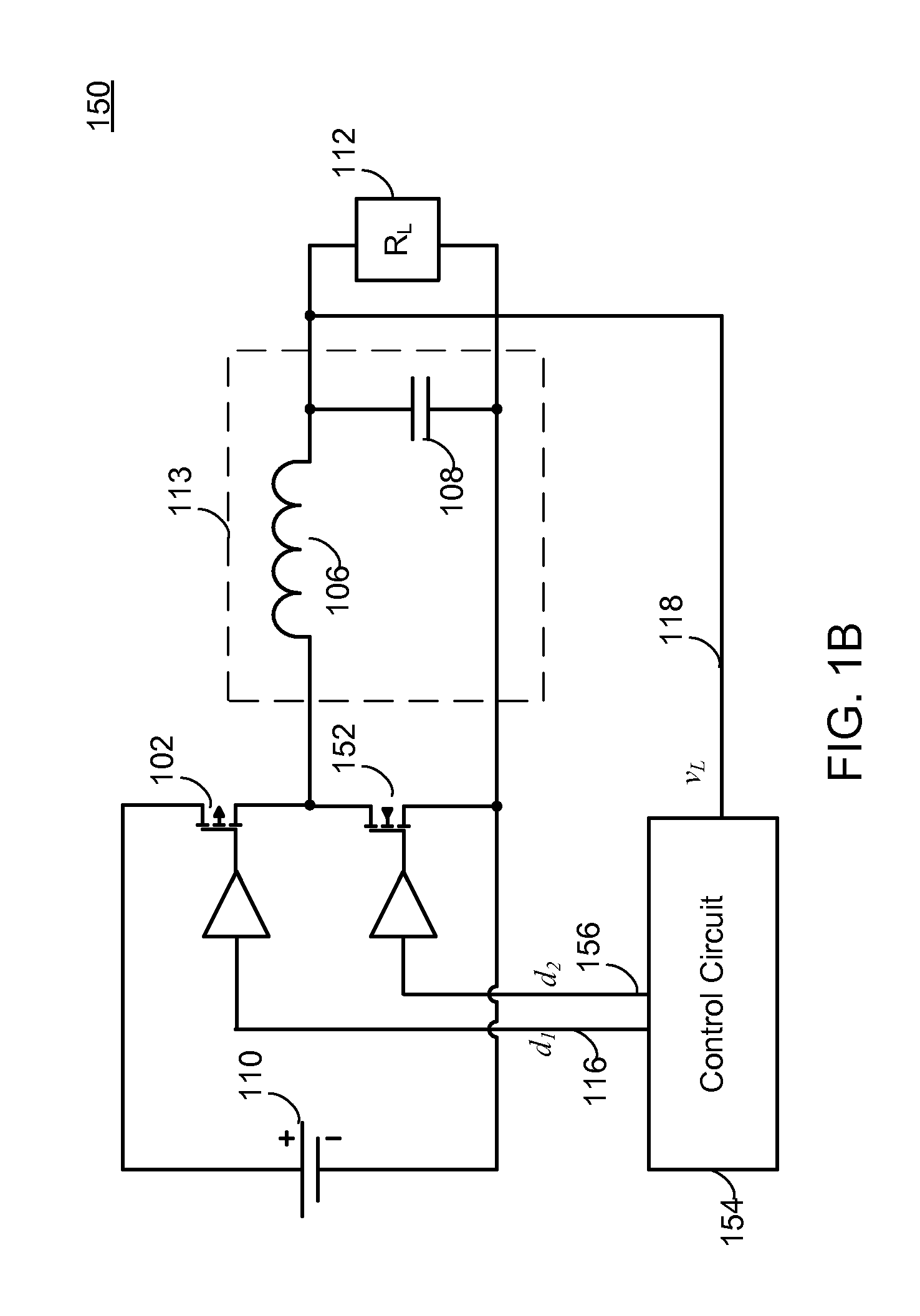RTWO-Based Pulse Width Modulator
- Summary
- Abstract
- Description
- Claims
- Application Information
AI Technical Summary
Benefits of technology
Problems solved by technology
Method used
Image
Examples
embodiment 270
[0039]Block PW 228 in FIGS. 2A and 2B combines selected output taps of RTWO1202 and RTWO2204. The output 229 of the PW block 228 is thus a pulse whose width is modulated by the input Vin 224. FIG. 2D shows an embodiment 270 of the PW block. Instead of using a single switching transistor, two transistors 272, 274 are used in series. The top transistor in the series receives the output of RTWO1202. The bottom transistor receives the output of RTWO2204. The pair of transistors 276 has an on time that is the overlap of the two RTWO outputs, as shown. An alternative to two transistors is a single transistor with dual gates (MOSFET) or bases (BJT), although such transistors are less common.
[0040]FIG. 2B shows an alternative design 240 in which the phase offset is digitally controlled. In this embodiment, the operation of RTWO1202 is the same as in the embodiment of FIG. 2A. The blocks for controlling the phase offset derived from RTWO2 are different. These blocks include a PD2 block 242, ...
embodiment 300
[0041]FIG. 2C shows a more simple embodiment 300 for digitally controlling the pulse width, which is illustrated conceptually in FIG.3. This embodiment includes an A / D block 302, a PS block 304 and a PW block 306, along with a single RTWO 308. The A / D block 302 receives the voltage Verror 310 to generate a digital version [d1, d2, . . . ,dn]312 of the control voltage. The digital version of the control voltage [d1, d2, . . . ,dn]312 operates to select one of N phases tapped directly from the RTWO 308 via the PS block 304. The PW block 306 recieves the selected phase 316 from the RTWO 308 along with a phase from a fixed tap 314 of the RTWO and operates to combine the phases to create the desired pulse width.
Power Converter Design
[0042]FIG. 4A shows the pulse width modulator used in a power converter 400. The input voltage Vin 402 connects to the output voltage 404 of the converter via a scaler block 406, which may increase or decrease the load voltage 404, and the output of the PW bl...
PUM
 Login to View More
Login to View More Abstract
Description
Claims
Application Information
 Login to View More
Login to View More - R&D
- Intellectual Property
- Life Sciences
- Materials
- Tech Scout
- Unparalleled Data Quality
- Higher Quality Content
- 60% Fewer Hallucinations
Browse by: Latest US Patents, China's latest patents, Technical Efficacy Thesaurus, Application Domain, Technology Topic, Popular Technical Reports.
© 2025 PatSnap. All rights reserved.Legal|Privacy policy|Modern Slavery Act Transparency Statement|Sitemap|About US| Contact US: help@patsnap.com



